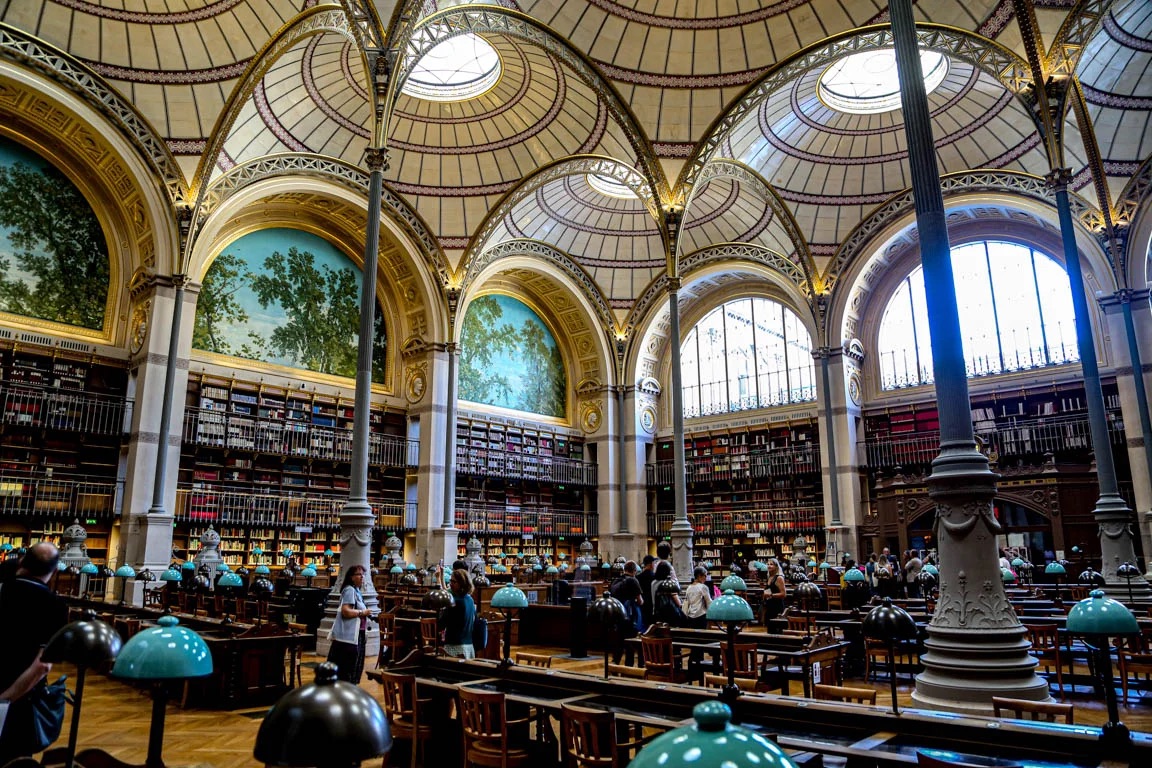
An emblematic place of Parisian intellectual life, once a haven of peace, study and idleness for the high French aristocracy, at a time when the cultural and political spheres were intimately intertwined, the quadrilateral Richelieu is an architectural complex rich in art, history... and mysteries. Explore the rich backstory of this building both intimate and collective, secret and public...
The story really unfolds with Cardinal Jules Mazarin, the successor to Richelieu as the chief minister to Louis XIII and his young heir, Louis XIV. Hailing from an Italian background, Mazarin was born in 1602 in Pescina and gained recognition for his political astuteness and expertise in diplomatic matters.
When Mazarin arrived in France in 1642, he brought with him an impressive collection of books, manuscripts and works of art, which he housed in his palace, known as the "Palais Mazarin" or "Hôtel Tubeuf". In 1666, Colbert, then Minister of Finance, moved the holdings of the Royal Library of France from Fontainebleau to two nearby buildings. In 1720, this complex of buildings - including the wing of the Palais Mazarin that became the Hôtel de Nevers, headquarters of the Paris Stock Exchange - was unified. Now, we find ourselves on Rue Vivienne, just a stone's throw from the Louvre, but also from the Palais de la Bourse, which shifted a little north under the Second Empire. This serves as a testament to the remarkable interconnectedness of political, financial, and cultural forces that thrived in Paris during that era!
Indeed, the district in which Jean-Baptiste Poquelin, famously known as Molière, resided has witnessed a remarkable proliferation of significant state-funded cultural institutions. Among these, the Palais-Royal, once the primary residence of Cardinal Richelieu, initially housed the renowned Comédie-Française (which later moved to the adjacent building). Today, it is recognized as the esteemed home of the Conseil d'Etat and the Ministry of Culture. A little further north stood the Académie Royale de Musique, which initially occupied the Salle Le Peletier until it was tragically destroyed by fire in 1862. However, it was swiftly replaced by the Palais Garnier, an architectural masterpiece designed by Charles Garnier in the 19th century, symbolizing both the Second Empire and the Third Republic. Adding to this illustrious array, to the east, was the renowned Salle Favart, revered as the temple of Opéra-Comique in Paris since 1898.
But the graphic and visual arts were not to be outdone: how could we fail to mention the Louvre, once the residence of kings and now the most visited museum in the world? Not to mention the Académie des Beaux-Arts, located on the other side of the Seine and linked to the district by the famous "Pont des Arts". Additionally, we must mention the École des Chartes, founded in 1821, which trains archivists, librarians, and heritage curators, who contribute to the preservation and dissemination of culture and history.
Over the centuries, the Richelieu district has become a veritable intellectual and cultural hub, attracting scholars, artists and students from all over the world. The surrounding streets abound with bookshops, literary cafés and other meeting places are conducive to intellectual exchange. The district also continues to be a major artistic center, with numerous theaters, art galleries and cultural institutions. Visitors can wander the streets of the district, immersing themselves in its unique atmosphere and uncovering its abundant cultural gems.
Today, the quadrilatère Richelieu stands as a cherished haven of knowledge and culture. It became the "Bibliothèque nationale" after the French Revolution, and continued to house one of the world's most important archive collections. Notably, it was in 1988, under the leadership of François Mitterrand, that the collections were relocated and the Richelieu site underwent a restructuring. Launched in the 2000s, major renovation and refurbishment work was carefully carried out to preserve the historic heritage while adding a touch of modernity. Buildings have been renovated and restored, public spaces have been redesigned to provide a pleasant setting for visitors, and new infrastructures have been created to host a variety of cultural activities.
Thanks to this renovation, the Quadrilatère Richelieu is now a dynamic place where tradition and innovation meet, attracting history enthusiasts, cultural connoisseurs, and art aficionados – adding to the effervescent cultural landscape of the magnificent French capital.